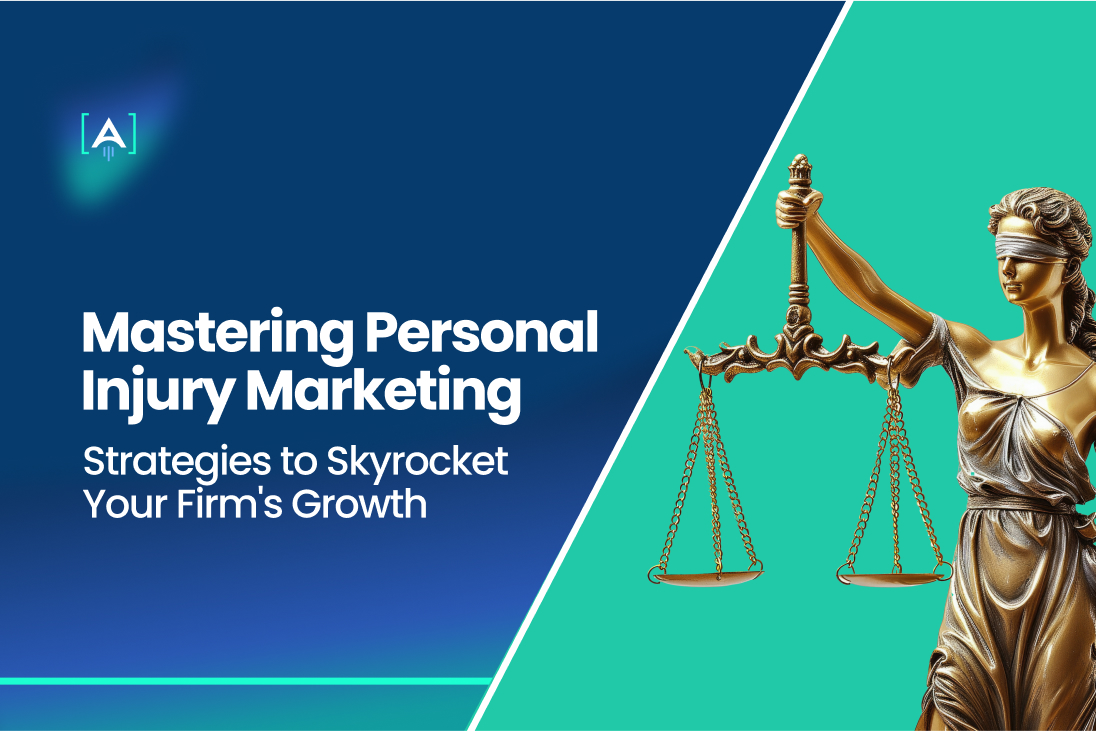Each month, 63,000 people are searching for a personal injury attorney.
Additionally, 76,000 individuals specifically look for a car accident lawyer.
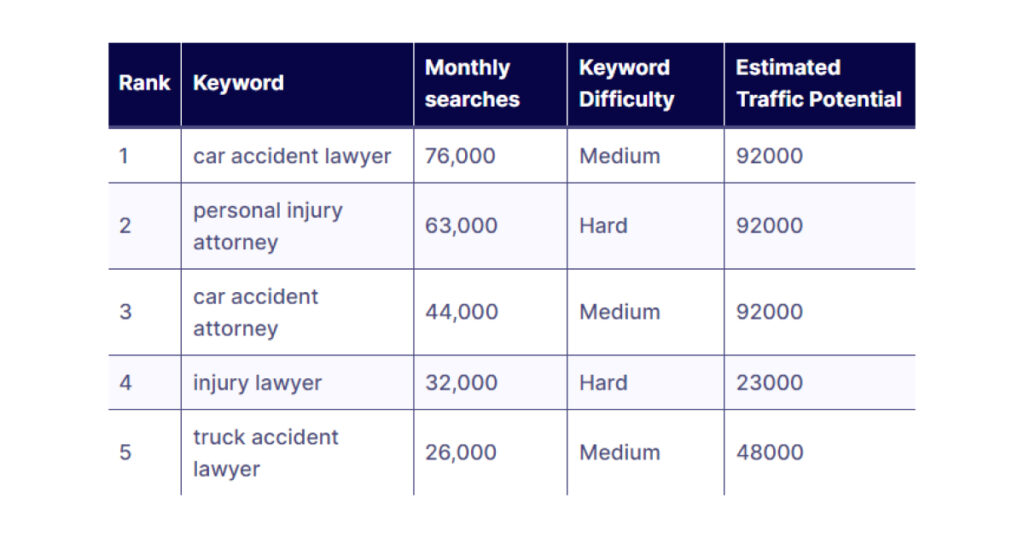
(source)
How many of these potential clients are reaching your law firm? Are you visible online where these searches are happening?
Proper personal injury lawyer marketing is paramount in today’s competitive legal industry.
Let’s explore strategies for ensuring your firm’s visibility and success in capturing the attention of prospective clients.
Digital Marketing for Personal Injury Lawyers
What exactly is personal injury lawyer marketing?
Simply put, digital marketing encompasses all the online marketing strategies and tactics used to promote your law firm’s services online.
It’s about leveraging the power of the internet to reach and engage with potential personal injury clients actively seeking assistance.
Digital marketing offers many opportunities to showcase your expertise, like search engine optimization (SEO), social media marketing, email marketing, etc.
Effective Marketing Strategies Personas for Personal Injury Lawyers
The first step in effective personal injury lawyer marketing is to identify your ideal clients.
For personal injury lawyers, this means knowing your ideal client’s needs, preferences, and pain points.
We’ll walk you through creating customer personas explicitly tailored for personal injury lawyers.
Identify Your Target Audience
One of the most critical steps in starting or growing a personal injury law firm is understanding your potential clients.
Even seasoned law firms can benefit from periodically reassessing and refining their customer personas.
Understanding Potential Clients: Key Characteristics and Behaviors

When it comes to individuals seeking the assistance of a personal injury lawyer, there are certain general characteristics and behaviors:
- In a Hurry: Many individuals seeking the services of a personal injury lawyer often deal with urgent matters. Whether they’ve been injured in an accident or deal with medical bills and lost wages, they typically seek a swift resolution to their legal issues.
- Seeking Reliability: Trust is paramount when choosing a personal injury lawyer. Potential clients want to feel confident that they’re entrusting their case to someone reliable, experienced, and capable of securing the compensation they deserve.
- Emotionally Vulnerable: Dealing with the aftermath of an accident can be emotionally taxing. Your potential clients may be feeling overwhelmed, confused, and vulnerable. They’re looking for a lawyer with the legal expertise to handle their case and understand and empathize with their situation.
- Information Seekers: Before making a decision, potential clients often conduct thorough research to educate themselves about their rights, the legal process, and the various options available to them. They’re likely to seek information online, read reviews, and ask for recommendations from friends and family.
Actionable Steps for Personal Injury Attorneys
Now that we’ve outlined some general characteristics of individuals seeking the services of a personal injury lawyer, let’s explore actionable steps to understand better and connect with this audience:
- Conduct Surveys and Interviews: Contact individuals recently seeking legal assistance for personal injury cases. Ask them about their experiences, what factors influenced their decision to choose a particular lawyer, and what they were looking for in legal representation.
- Analyze Online Reviews: Dive into the online reviews left by clients for personal injury lawyers in your vicinity. Observe the recurring patterns, whether commendations or critiques, to grasp the key aspects that resonate with clients in their interactions with attorneys.
- Monitor Social Media Interactions: Monitor social media platforms where your target audience may be active. Pay attention to questions, comments, and discussions related to personal injury law to better understand their concerns and priorities.
- Engage in Community Outreach: Participate in local events, seminars, and workshops related to personal injury law. Take the opportunity to connect with potential clients face-to-face, listen to their stories, and address any questions or concerns they may have.
Creating a Customer Persona
You understand your audience’s needs, preferences, and motivations by creating detailed customer personas.
Thus, you can tailor your marketing messages and strategies to connect with potential clients effectively:
- Gather Data: Collect data from various sources, including surveys, interviews, online reviews, and social media interactions. Look for commonalities and trends among your potential clients.
- Identify Demographics: Define your audience’s age, gender, location, occupation, and income level. For instance, your personas may include “John, a 35-year-old construction worker from the suburbs.”
- Understand Needs and Pain Points: Identify what motivates them to seek legal assistance. What obstacles do they face in the process? For example, “Sarah, a single mother struggling with medical bills after a car accident.”
- Consider Goals and Objectives: Determine whether they seek financial compensation, justice, or peace of mind. For instance, “David, a small business owner seeking compensation for a workplace injury.”
- Include Behavioral Insights: Explore your audience’s behavioral characteristics, such as their preferred communication channels, information-seeking habits, and decision-making process. For example, “Lisa, a tech-savvy millennial who relies on online reviews and recommendations.”
- Personalize Personas: To make them more relatable, give each persona a name and a face. Consider creating visual representations and backstory narratives to bring your personas to life.
You can ask ChatGPT to create a customer persona for your personal injury law firm, giving it your information.
Here’s an example:
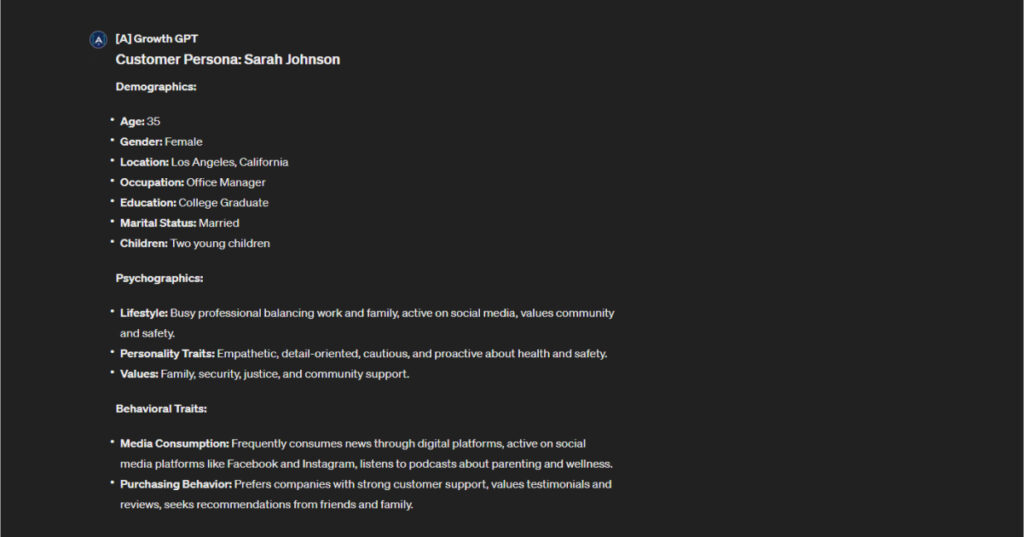
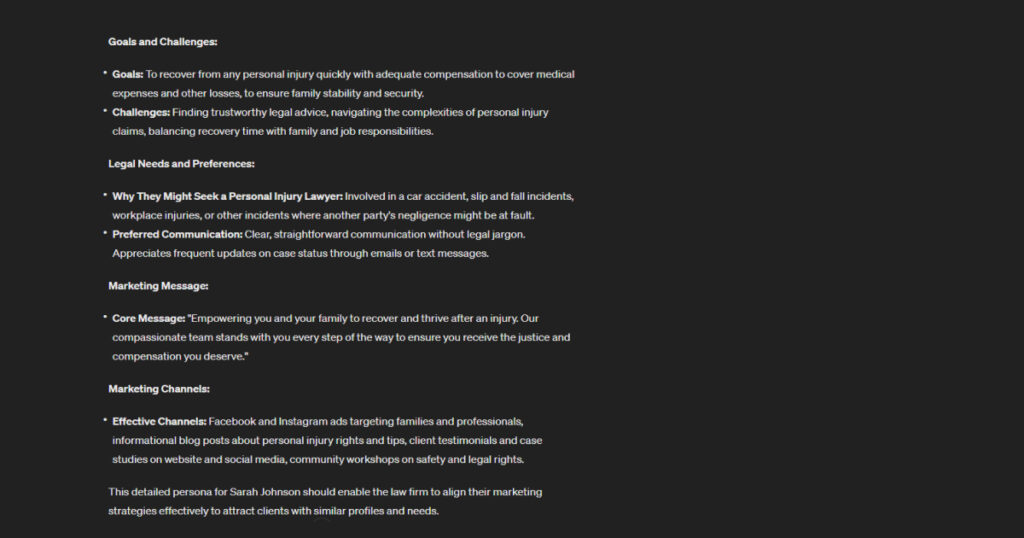
Addressing Urgency
As mentioned, time is precious in personal injury cases.
Delayed responses or slow processes can result in losing clients and opportunities.
Therefore, it’s crucial to prioritize addressing urgency in your firm’s operations and communications. Here are some steps.
Develop a Mobile-Friendly and Responsive Website

(source)
This is particularly significant for legal clients in a hurry, who often turn to their smartphones for quick access to information and assistance.
Here’s how you can ensure your law firm’s website meets the needs of mobile users:
- Choose a Responsive Design: Your personal injury website design should automatically adjust to fit various screen sizes and devices.
- Prioritize Page Speed: Compress images, minify code, and eliminate unnecessary scripts to avoid making your clients leave.
- Streamline Navigation: Organize your content clearly and intuitively. Use dropdown menus, collapsible sections, and clickable buttons to make it easy for users to find the information they need, regardless of their device.
- Optimize Forms for Mobile: If your website includes contact or lead capture forms, ensure they are optimized for mobile users. Use larger input fields, clear labels, and simple validation to make it easy for visitors to complete forms on their smartphones or tablets.
- Test Across Devices: Identify any issues or inconsistencies and address them promptly to provide a seamless experience for all users.
Implement Live Chat Support

Add a live chat to your website so visitors can get help right away.
This means potential clients can quickly get answers to their questions without having to wait.
By offering instant support, you can keep potential clients engaged and prevent them from looking for assistance elsewhere.
Promptly Respond to Inquiries
Establish a system for promptly responding to inquiries and messages.
Whether through phone calls, emails, or social media, ensure prospective clients receive timely and personalized responses to their queries.
Remember, every interaction counts, and being responsive can make all the difference in securing new clients.
Building Trust and Reliability
Your clients must have confidence in your abilities, integrity, and commitment to their case for the partnership to thrive. Here are some strategies to build trust and establish your firm’s reliability:
Get Listed in Directories
Ensure your law firm’s name appears in reliable online legal directories and listings.
Being listed in well-regarded directories boosts your firm’s visibility and credibility, making it simpler for potential clients to discover you when they need legal assistance.
Some reputable directories to consider include:
Being present on these platforms increases your chances of being found by individuals seeking legal representation, thus expanding your client base and enhancing your firm’s reputation in the legal community.
Showcase Client Testimonials
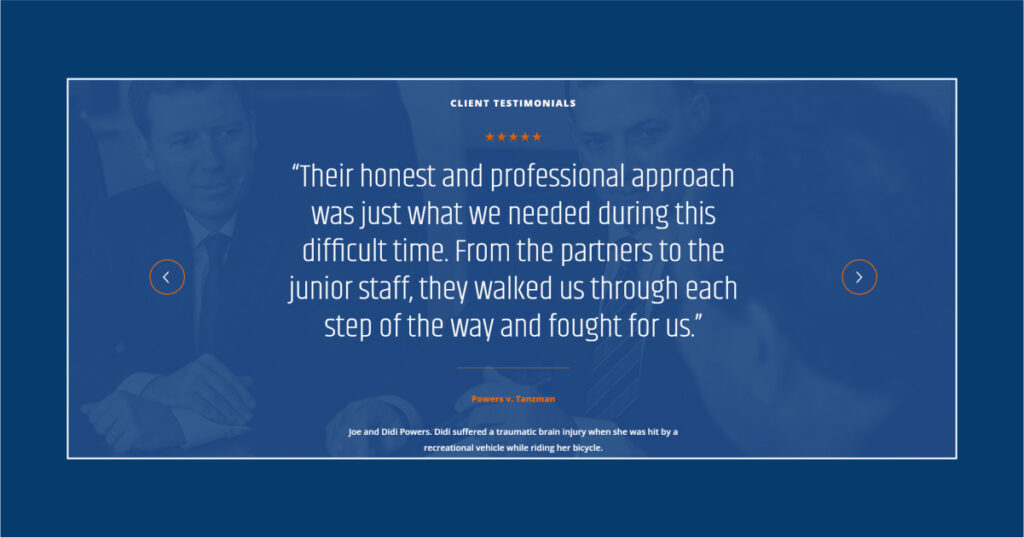
Showcasing client testimonials on your law firm website is a powerful way to add trust to potential clients.
These testimonials provide real-life examples of your firm’s ability to deliver results and satisfy clients’ needs.
Visitors seeing positive feedback from previous clients reassures them that your firm is reliable and capable of handling their cases effectively.
You can also display video testimonials, which are trending and more effective.
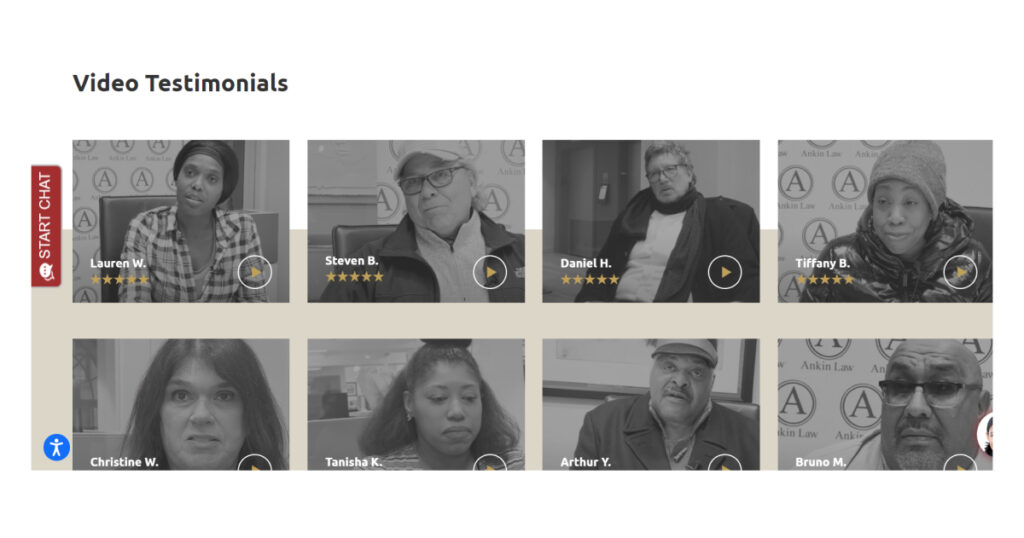
Provide Transparent Information
Be transparent about your legal services, fees, and the legal process.
Clear and upfront communication instills confidence in potential clients and demonstrates your commitment to transparency and honesty.
Local Search Engine Optimization (SEO)
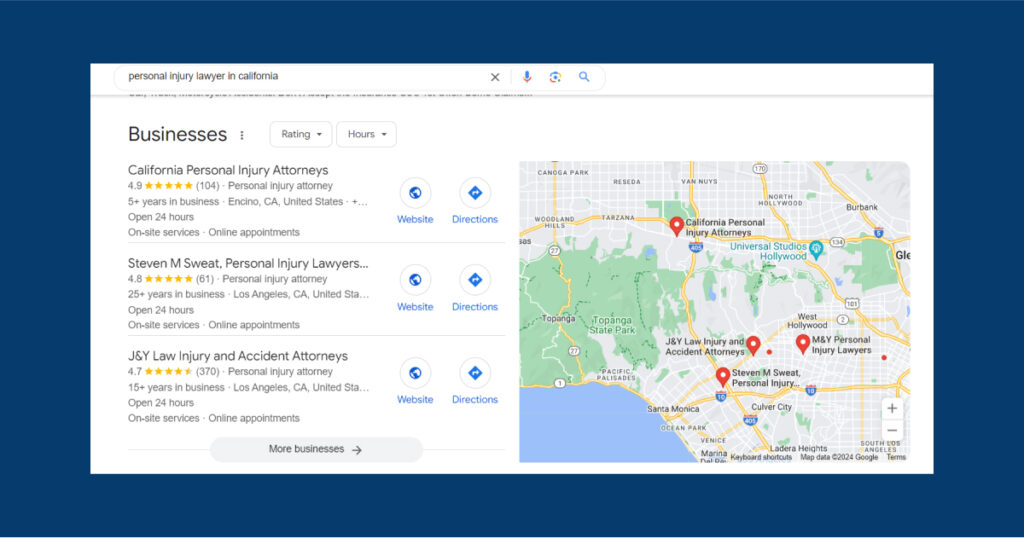
Another crucial strategy for personal injury lawyer marketing is improving your firm’s online visibility and credibility by optimizing for local search results.
This involves leveraging platforms like Google My Business (GMB) to enhance your presence in local search queries.
How it Works:
- Google Business Profile: Claim and optimize your Google Business Profile.
- Local Search Results: By optimizing for local search, your firm can appear in the “Local Pack” and “Local Finder” results when potential clients search for personal injury lawyers in their area.
Steps to Optimize Local SEO:
- Claim Your Google Business Profile: Verify and claim your GMB listing and provide accurate information.
- Add Photos and Videos: Upload high-quality images and videos that showcase your firm’s office, team, and services to enhance your profile’s visibility and appeal.
- Collect and Respond to Reviews: Ask satisfied clients to share their positive experiences on your GMB. Don’t forget to promptly respond to feedback or inquiries to demonstrate your commitment to client satisfaction.
- Incorporating Relevant Keywords: Integrate key terms associated with personal injury law and your geographic area into your Google My Business profile description and posts. For instance, if your firm is in New York City, include phrases like “New York personal injury lawyer” or “NYC accident attorney.”
- Post Regular Updates: Share updates, announcements, and offers on your GMB profile to engage with potential clients and inform them about your firm’s latest news and developments.
Meeting Information Needs
Educating potential clients about their rights and legal options is essential. Here are some ways to provide valuable information and guidance:
Develop a Comprehensive FAQ Section:
Create a dedicated FAQ section on your law firm website to address common questions and concerns about personal injury law.
Answer questions clearly and concisely to help potential clients understand their rights and options.
Starting a blog dedicated to personal injury law establishes your firm as a trusted source and attracts potential clients. Here’s how to get started:
Choose Relevant Topics
Focus on topics that address your audience’s needs. For instance, write about:
- Common Types of Personal Injury Cases: Discuss car accidents, slip and fall incidents, medical malpractice, and workplace injuries.
- Legal Rights and Responsibilities: Explain liability, negligence, and compensation laws in personal injury cases.
- The Claims Process: Guide readers through filing a personal injury claim, from gathering evidence to negotiating settlements.
- Recent Developments: Keep your audience informed about changes in personal injury law, such as new legislation or landmark court decisions.
Develop Pillar and Spoke Strategy
Pillar and Spoke is a content marketing strategy.
Pillar content is the foundation, covering broad topics within your niche or industry.
These comprehensive, authoritative pieces provide an overview of key aspects, like “Car Accidents” or “Medical Malpractice.”
Spoke content branches off from the pillars and delves into more specific subtopics or aspects related to the main theme.
These articles or posts offer in-depth insights, practical tips, case studies, or examples that further explore particular aspects of the broader topic.
For example, under “Car Accidents,” you might have articles about “What to Do After a Car Accident” or “How to Determine Fault in a Car Accident.”
Here are some pillar and spoke topics you can use:
Pillars:
- Car Accidents
- Slip and Fall Injuries
- Medical Malpractice
- Workplace Accidents
Spokes:
- “Understanding Fault in Car Accident Cases”
- “Actions to Follow After a Slip and Fall Incident”
- “Proving Medical Negligence in Malpractice Claims”
- “Worker’s Compensation Laws: What You Need to Know”
Build Links
When crafting your blog post, don’t overlook the power of link-building.
Whether connecting to other pages within your website or referencing valuable resources outside your domain, strategic linking can significantly improve the quality and impact of your content.
Internal Linking
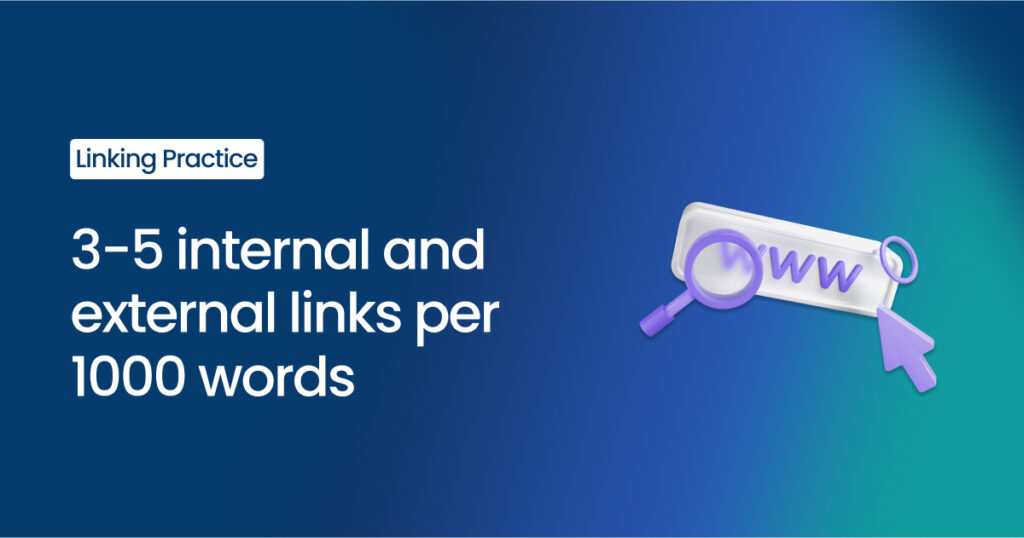
This means linking to other pages within your website. Thus, you create a map for your visitors to explore more of your content.
It’s a great tactic to keep visitors engaged.
For example, when someone reads an article about car accidents, you can link to another page about what to do after a car accident, keeping them on your site longer.
It also boosts SEO. Google crawls and indexes your site using internal links. The more links you have, the easier for them to understand your content and rank it higher in search results.
External Linking
External linking includes hyperlinks in your content that direct readers to websites outside your own.
These websites are typically reputable sources that offer additional information, insights, or resources relevant to the topic you’re discussing.
These are references or citations that provide credibility and context to your content.
By linking to authoritative sources, you improve your content’s value and allow readers to explore and learn more.
Use Social Media Platforms
Reach out to potential clients and make your firm visible online by posting on social media.
Share informative content, legal insights, and news articles relevant to personal injury law across platforms like Facebook, Twitter, and LinkedIn.
If you’re an individual personal injury lawyer or law firm CEO, you can position yourself as a thought leader by sharing expertise, insights, and industry updates.
This showcases your knowledge and credibility and helps attract potential clients seeking reliable legal guidance.
Harnessing the Power of PPC Ads
PPC (Pay-Per-Click) advertising, especially through platforms like Google Ads, is a crucial component of personal injury marketing.
It allows personal injury law firms to target potential clients actively searching for legal assistance.
By appearing prominently in search engine results, PPC ads can significantly increase a firm’s visibility and attract valuable leads.
How to Leverage PPC Ads?
- Define Your Goals: Let’s say your goal is to increase website traffic. You aim to attract more visitors to your firm’s website to learn about your legal services and potentially become clients.
- Conduct Keyword Research: You identify personal injury PPC keywords such as “personal injury lawyer,” “car accident attorney,” and “slip and fall lawyer” as relevant terms potential clients might use when searching for legal assistance in your area.
- Create Compelling Ad Copy: Craft ad copy that emphasizes your firm’s expertise, such as “Experienced Personal Injury Attorneys Ready to Protect Your Rights” or “Get the Compensation You Deserve – Contact Us Today!”
- Set Your Budget: Based on your goals and financial resources, you allocate a marketing budget of $1,000 monthly for your PPC campaign.
- Target Your Audience: Use Google Ads targeting options to reach individuals in your local area who are searching for personal injury attorneys. You target specific demographics, such as age and gender, and adjust bidding strategies to maximize your ad’s visibility among your target audience.
Empower Your Personal Injury Law Firm Marketing
If you struggle to keep up with the demands of personal injury lawyer marketing, [A] Growth is here to help.
Our dedicated team of experts, including a growth lead, content manager, SMM manager, designer, and web developer, specializes in personal injury marketing services, ensuring your personal injury law firm marketing efforts are optimized for success.
From crafting compelling content to implementing targeted social media strategies, we have the expertise and resources to improve your firm’s marketing and generate more leads.
